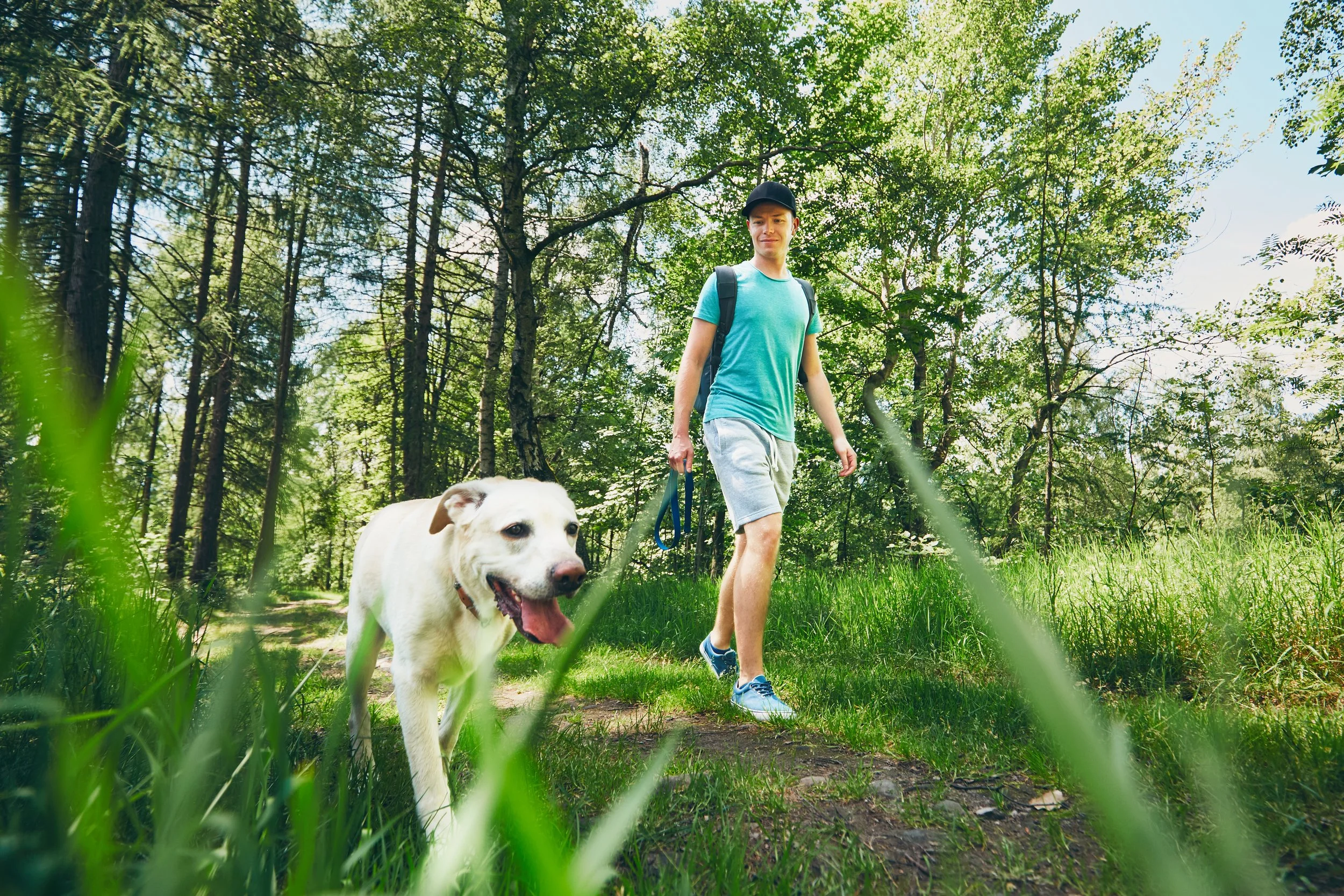Ambassador Highlight | Traveling with a Giant Dog
If you are anything like me, you've scrolled through Instagram and have seen all these dogs traveling North America and thought “but how do they do it?”. Most of these dogs are smaller to medium sized, but ours is a huge Saint Bernard. This is how we travel with a giant dog (the hardest to travel with).
Kinley has traveled all around the Great Lakes Region, Smoky Mountains and Rocky Mountains and surprisingly, it isn't as hard as you’d think. It does take patience and time but it's way more rewarding to see the sights when you have your faithful companion by your side.
Trial & Error
Before you set off on your grand, multi-week vacation with your pup; start local. Go on a long weekend within a few hours of your home. Get used to booking places to stay in advance and having to compromise on where you get your dinner. It might be frustrating in these first few “mini trips”, but it is worth it to get used to always having your dog with you.
Here are just a few roadblocks you may encounter and how we have dealt with them.
Restaurants: A good rule of thumb is to see if they have outside seating. A vast majority of restaurants that have outside seating are dog friendly, though it is always a good idea to call ahead and ask. We have a lot of luck with Breweries. They’re normally open all day and in the colder months they might have heating lamps on their patios, depending on the regions. Here in the Midwest, Restaurants stop doing outside seating at the end of October. This is where takeout becomes helpful; find a picnic table or take it back to wherever you are staying.
Shopping: This part can be hard if you don't have a friend or significant other with you. The way my boyfriend Joey and I do it is we take turns. He’ll stay outside with Kinley as he browses the local shops and vice versa. We’re not big shoppers so this was an easy accommodation for us.
Booking in Advance: Starting a trip with nothing booked could leave room for problems to derail your trip. I always book our Airbnb or hotel weeks, sometimes even months, in advance. Never try to sneak your dog into a rental or room; always be honest and respectful of their rules. By respecting their rules, other dog owners will be able to use their services as well. If you do want to plan your trip on the fly, I would recommend camping. Most campsites are both dog and budget friendly.
Activities: Depending on the kind of trip you’ve planned, having your dog along can limit the activities you can do. If you're a city person and enjoy museums, then that may not be the trip for your dog. If it is just a small chuck of time during your trip, there are likely a few doggie daycare options for your dog. If your trip is planned around hikes and being in the great outdoors, then you'll have a much easier time. Always be sure to follow all trail rules and practice Leave No Trace. Keep in mind that most National Parks are not dog friendly. Please do your research beforehand on where dogs are and aren't allowed inside the parks.
Transportation
This may be the trickiest part for people because it might be foreign. Depending on the size of your dog, air travel might be completely out of the option, like it is for us. If you’re blessed with a large dog, you're going to have to get used to “road tripping”. Planning the details of a road trip can be difficult. As yourself: will you rent a car or use your own? How far will you be going? Where can you stop to let your pup stretch their legs? We have rented cars from Turo (dog friendly company), we've used our personal cars, and for the first time we will be renting a converted travel van for our upcoming trip. Generally, we tend to rent a vehicle once we leave a 10-hour radius of our home. This way, we save the miles on our own cars and don’t have to worry about maintenance on the road.
Now that the logistics are planned; what should you bring for your dog now we are traveling together!?
The travel essentials
Too much dog food
At least 1 jug of purified water
Collapsible dog bowls
Plenty O’ Poop Bags
A safe chew for the drive (antler/yak chew)
A few bandannas
Spare collar
At least 2 Leashes in case one gets dirty or forgotten somewhere
Flea and Tick prevention before trip starts
Vet records printed out
Triumph Dog Treats
Dog bed
Hiking Essentials (dog/breed dependent)
Hiking dog pack (only have 20% of dogs mass in pack)
Collapsible water bowl
Plenty of water
Dog Booties (weather/terrain/breed dependent)
Harness with handle for control and to help with obstacles
Short hiking leash or hands-free belt system
I always keep a Kurgo First aid kit in Kinley’s pack (available at PetSmart)
When to travel
What we must do might be different from you but think about your dog when finding the best time to take your trip. Because of her thick coat, Kinley can't be in hot climates comfortable, so summer traveling is a no go for us. We travel in autumn, winter, and early spring to chase the cooler temperatures. Always do what is best for your dog. If your pup is hot and lethargies in the summer, don't take a summer trip when it's going to be hot the whole time. The same goes for dogs that aren't excited about activities in the cold. Of course, you can spend money on winter coats and booties for your pooch but if your dog still doesn't like snow, then it is just best to avoid the winter months.
The best thing you can do is travel with your dogs. You learn so much about each other and develop a bond that is unbreakable. Like everything else in life, just because it is hard, that doesn’t mean it isn’t worth it. The next trip you plan, include your pup! You dog will thank you and your trip will be even more special.





















